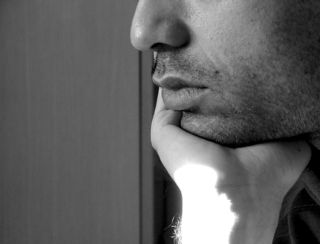Scent
Men's Self-Esteem Boosted by Female Pheromone
New research shows that sniffing 'copulins' makes men feel more attractive.
Posted May 31, 2016 Reviewed by Jessica Schrader

The saying goes that beauty is in the eye of the beholder. But attraction is based on more than love at first sight. When we feel chemistry with another person, it may be thanks to one of our chemical senses: our sense of smell.
For many animals, the primary method of negotiating hook ups is by odor. When a female boar catches a whiff of a male’s musk, she finds it an instant aphrodisiac. But do humans also secrete pheromones?
The general consensus among scientists is that, although body odor can affect attractiveness, humans don’t employ pheromones in the same way that other mammals or insects do. But recent evidence suggests that women do secrete a collection of chemicals that trigger various responses in men. These chemicals have been dubbed “copulins” because of their effects on sexual behavior.
In our primate cousins, several fatty acids are found in vaginal secretions. The fatty acids — the copulins — are more concentrated when females are most fertile. Female chimpanzees and stump-tailed macaques who produce more copulins receive more sexual advances from males.

Megan Williams and Amy Jacobson of Rutgers University in New Jersey decided to test for the effects of copulins on men’s mating psychology. Rather than collect real copulins, they whipped up a batch of synthetic copulin solution in the lab. The solution contained five fatty acids at concentrations identical to those shown by previous research to be associated with ovulation, the time in a woman’s cycle when she is most fertile. 5ml of the copulin solution was poured onto a gauze pad, which was then pinned onto the inside of a surgical mask.
One hundred straight men wore either a copulin-infused mask, or an untainted control mask, while completing a series of activities on a computer. They rated photographs of women’s faces for attractiveness, estimated their own sexual desirability, and answered questions on their mate-guarding behavior (how frequently they use various tactics to prevent their partner from pursuing other men, or to prevent men from pursuing their partner).

The results of the experiment showed that men in the copulin and control groups didn’t differ in their mate-retention behavior. Copulins apparently have no effect on jealousy, or at least self-reported behaviors inspired by jealousy. Ratings of women’s facial attractiveness were slightly higher in the copulin condition (14% higher), although analysis of this difference revealed that it was not statistically significant. We can’t be sure it’s a genuine difference.
However, copulins did have a significant effect on men’s estimates of their own sexual desirability. Men who sniffed copulins rated themselves 21% more desirable than men who sniffed fresh air.
It is unclear whether humans have evolved to use copulins in any meaningful way. Do women secrete copulins to attract the attention of men? Are men motivated by copulins to pursue women, or to compete with rival men? Another hypothesis mooted by Williams and Jacobson is that “copulins are a by-product of our shared ancestry with non-human primates.” If true, humans may not be adapted to deploy or respond to copulins, but we do so (however slightly) because of a holdover from our tree-swinging ancestors.
So, do humans secrete and respond to pheromones? The answer seems to be yes, but our sexy secretions appear to be much less persuasive than those of our animal cousins.
For an audio version of this post, see the 31 May 2016 episode of The Psychology of Attractiveness Podcast. You can also keep up with my podcasts and blogs by downloading The Psychology of Attractiveness app.
References
Williams, M. N., & Jacobson, A. (2016). Effect of copulins on rating of female attractiveness, mate-guarding, and self-perceived sexual desirability. Evolutionary Psychology, 14(2). Read paper.


